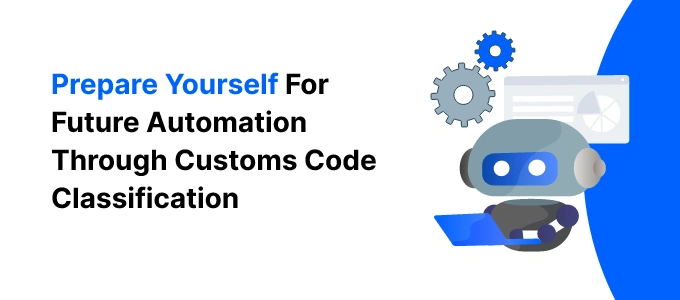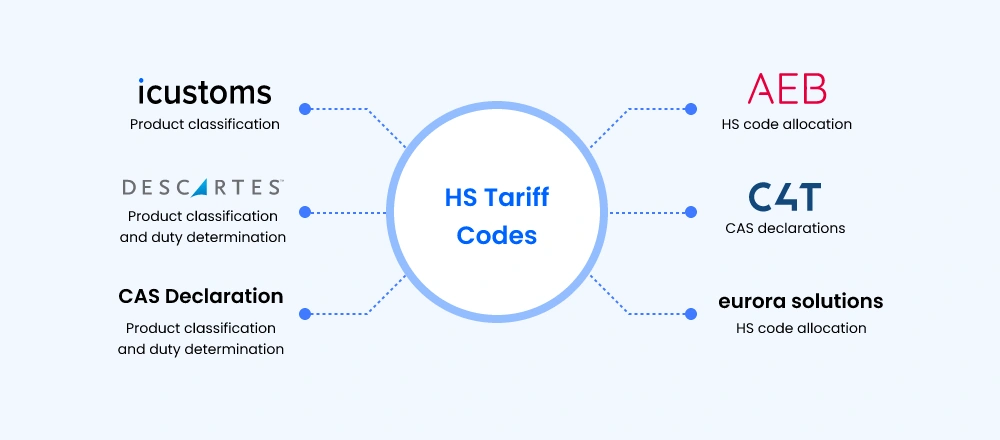Fast & Accurate ENS GB & EU ICS2 Solutions Built for You.
Navigating Customs Tariff Codes with Expert Automation - iCustoms
-
Freya Jane
- Director of Customer's Success
International trade is complicated, and so are the customs processes and rules that govern it. However, customs tariff codes have substantially simplified customs processes and international trade. The function of customs tariff codes in streamlining international trade lies in the importance of precise product categorisation.
Global trade volume is increasing enormously every year, resulting in more stringent and complex customs processes. A McKinsey 2021 report predicts that
“The global trade volume could grow around $4.4 trillion per year by 2023 if the customs procedures are made more efficient.”
The only way to improve customs procedures is through automation. Another finding from McKinsey reveals that,
“Automation has the potential to reduce traders by 50% of the time they waste on finding customs tariff codes manually.”
This translates to significant time savings for businesses involved in international trade, potentially leading to faster product delivery, improved customer satisfaction, and a more competitive edge.
In this blog, we’ll discuss the advantages the customs tariff codes provide to businesses and customs agencies. Moreover, we’ll also look at how automation may dramatically change customs procedures, allowing for faster clearance times and more efficient trade facilitation overall.
Comprehending customs tariff codes
Customs Tariff Codes, commonly known as Commodity Codes, are standardised product categories. These codes are very important for correctly classifying products for customs. They facilitate duty assessment and trade data by providing a common language to designate distinct products.
Learn more about commodity codes or HS codes with our detailed guide. Click here!
Revealing the HMRC's commodity codes
The UK’s tax agency, HMRC, keeps a full set of Commodity Codes, which are sometimes called HMRC HS Codes. These codes offer importers and exporters a uniform point of reference by classifying products for customs purposes. It’s crucial to comprehend and apply these commodities codes if you want to successfully negotiate complex customs processes.
Do customs tariff codes define customs procedures?
The answer to this question includes a variety of aspects because customs procedures vary from state to state. Here, we’re going to talk about UK customs. Tariff codes are obtained from the HMRC website using the tariff code platform. It is a custom codes hub that enables domestic and international customs brokers working in small or large firms to get authentic codes. These are more resourceful when it comes to import codes because, while importing, the first six digits must match globally.
They are equally useful in exporting goods, too, as the codes, product descriptions, and VAT percentages are acquired with respect to each product. The major task in customs procedures is defining the exact code based on the description of the product. For customs declarations, these tarrif codes are easy to find on customs clearance websites that provide customs services, such as iCustoms.
Customs Tariff Codes Finder

UK Integrated Online Tariff
Best match Products Name or products description , you can select any of them to check and calculate duty rate, VAT rate and total landed cost.
- Searching...
This tariff information is for the UK only
Why do websites obtain the customs tariff code?
The only source that provides customs tarrif codes is the HMRC official website, but it gives the declaration websites and companies the facility to verify and cross-check the codes of the product based on the keyword or description. Some of the reasons why websites use customs tariff codes are due to the:
- Since the HMRC platform is open to anyone and does not cost anything, websites frequently rely on it as a primary source.
- Websites have developed their own tools for getting codes, such as product classification, commodity code checker, HS-code finder, and HS tariff code lookup.
- HMRC has created a chain for trading websites and companies to earn money and also help in revenue generation.
- These websites provide several other services other than commodity code checker which are essential in customs declaration services.
Future automation based on custom tariff code
In the future, automation based on Customs Tariff Codes will be able to connect with systems outside of customs clearance. Trade participants may know where their products are at all times by linking customs codes to logistics management platforms and enterprise resource planning (ERP) systems. Tarif codes data is more easily shared and tracked, and stakeholders can work together more effectively because of this connection.
Customs processes that rely on commodity code tariff have much to gain from using blockchain technology. Blockchain technology offers a distributed ledger system that is transparent, secure, and immutable, making it ideal for logging and validating business records. Customs officials may use blockchain technology to build a decentralised platform for information exchange among importers, exporters, logistics providers, and other organisations. Customs operations can be made more trustworthy, fraud can be minimised, and trade efficiency will increase thanks to this technology.

Comparison of different customs tariff codes provided by firms
The above table depicts that iCustoms ranks higher than other customs clearance websites because of its user-friendly interface and ease of use. Custom tariff code or tarif code requires global updating and similarity for a smooth customs experience. Each and every customs website has some special features and follows different working terminologies.
iCustoms product classification tools follow smart AI automation and separate their tool’s workings to identify their true usage. All other firms also operate on artificial intelligence, but the iCustoms document automation service is the beginning of the new customs era.

Conclusion:
FAQ's
What is a customs tariff classification?
It assigns customs codes to items. These codes classify goods according to trade statistics and tariffs.
What is a commodity code?
It is a standardised identifier used by customs to classify products involved in trade.
How does the customs duty UK calculator work?
The Customs Duty UK Calculator works by gathering information about imported commodities, such as their description, value, and Commodity Codes. Using this data, it applies predetermined tariff rates and determines the amount of customs charges payable.
How do UK commodity codes impact customs duty?
They guarantee correct duty assessment and are essential to the UK's duty calculator.


